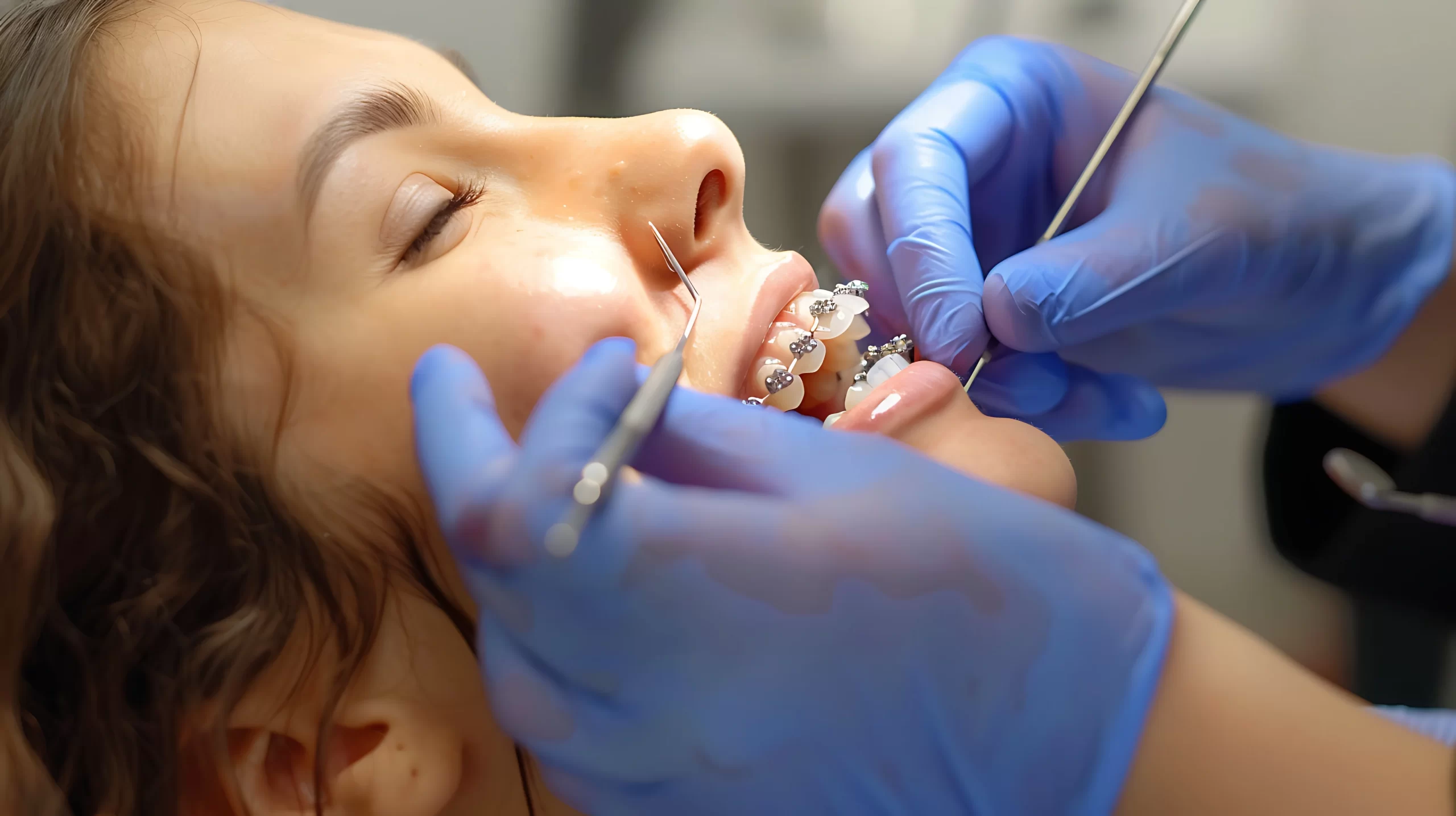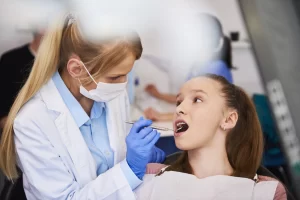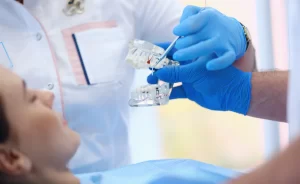Can an Orthodontist Pull Teeth?

Remember that feeling of dread as a child when you had a wobbly tooth and knew a trip to the dentist was inevitable? The cold, sterile smell of the surgery, the whirring of the drill, the pinch of the anaesthetic… Now imagine that feeling magnified, and you’re an adult facing the prospect of having perfectly healthy teeth intentionally removed. It sounds counterintuitive, doesn’t it? Why would an orthodontist, whose mission is to create beautiful, healthy smiles, resort to pulling teeth?
Well, the truth is, sometimes extractions are a necessary step in the journey to that perfect smile. But before you envision a scene from a horror film, let’s delve deep into the world of orthodontics and explore why, when, and how orthodontists perform this procedure.
When Tooth Extractions Become Necessary in Orthodontic Treatment
Orthodontists aren’t just dentists who specialise in straightening teeth; they’re highly trained specialists in dentofacial orthopaedics. Think of them as architects of the mouth, meticulously planning and guiding the movement of teeth and jaws to achieve optimal function and aesthetics. Just like an architect might need to remove a wall to improve the flow and functionality of a house, an orthodontist might recommend extractions to create the space needed for proper tooth alignment. Here are some common reasons why:
- Overcrowding: This occurs when your jaw is simply too small to comfortably accommodate all your teeth. It can lead to a whole host of problems, from crooked teeth and difficulty cleaning to more serious issues like bite problems and jaw pain. Extractions, often of premolars, create the necessary space for the remaining teeth to align correctly, much like giving each person in a crowded room enough space to breathe.
- Impacted Teeth: Sometimes, teeth, particularly wisdom teeth or canines, get “stuck” and fail to erupt properly. These impacted teeth can lead to pain, infection, damage to neighbouring teeth, and even the formation of cysts. Extracting them allows the other teeth to erupt correctly and prevents further complications.
- Facilitating Orthodontic Appliances: Braces and aligners work by applying gentle pressure to move teeth into their desired positions. However, if there isn’t enough space, these appliances may not be effective or could even cause the front teeth to protrude excessively. Extractions can help create the optimal conditions for these appliances to work their magic, ensuring a successful and aesthetically pleasing outcome.
- Correcting Severe Malocclusion: Malocclusion, or a “bad bite”, can range from a minor overbite to a severe underbite. In some cases, extractions are necessary to correct the underlying skeletal discrepancies and achieve a healthy, functional bite. This not only improves the appearance of your smile but also ensures you can chew and speak properly.
The Role of the Orthodontist in Tooth Extractions
Now that we understand why extractions might be necessary, let’s explore who performs them. Rest assured, your orthodontist isn’t just winging it. They’ve undergone years of rigorous training beyond dental school, specialising in the intricacies of dentofacial orthopaedics.
Orthodontic Expertise: Specialised Training in Dentofacial Orthopaedics
Becoming an orthodontist is no walk in the park. It requires:
- A dental degree provides a foundation in oral health and dental procedures.
- A specialised residency programme (typically 2-3 years) with an intensive focus on diagnosing, preventing, and treating dental and facial irregularities. This involves mastering biomechanics, growth and development, and the intricate art of tooth movement.
They are experts in the art and science of moving teeth, and that includes knowing when and how to perform extractions safely and effectively.
Scope of Practice for Orthodontists
Orthodontists are licensed dentists with the added qualifications to perform a wide range of procedures, including tooth extractions, especially those related to orthodontic treatment. They’re like the general contractors of your mouth, overseeing the entire renovation project from start to finish. However, the specific scope of practice can vary slightly depending on local regulations.
Collaboration with Oral Surgeons
While orthodontists are skilled in tooth extractions, they also recognise their limitations and prioritise patient safety. In cases requiring complex extractions, such as impacted wisdom teeth with unusual root structures or when a patient has specific medical considerations, they might refer you to an oral surgeon who has even more specialised training and experience in surgical procedures. This collaborative approach ensures you receive the most appropriate care for your individual needs.
The Orthodontic Tooth Extraction Process
If your orthodontist determines that extractions are necessary, it’s natural to feel a bit anxious. However, understanding the process can help alleviate your fears.
Comprehensive Assessment and Treatment Planning for Tooth Extractions
Before any tooth is extracted, your orthodontist will:
- Conduct a thorough examination, using various diagnostic tools like X-rays (panoramic and cephalometric), digital scans, and photographs to get a complete picture of your oral health and facial structure.
- Assess your specific needs and develop a personalised treatment plan, taking into account your individual circumstances, preferences, and treatment goals.
- Explain the reasons for the extractions, the expected outcome, and any potential risks or complications, ensuring you are fully informed and involved in the decision-making process.
Understanding Simple and Surgical Tooth Extractions in Orthodontics
Extractions generally fall into two categories:
- Simple extractions: These are typically performed on teeth that have fully erupted and are easily accessible. The orthodontist uses specialised instruments to loosen the tooth and gently remove it from the socket.
- Surgical extractions: These are more complex and involve the removal of teeth that are impacted, broken, or haven’t fully erupted. They may require an incision in the gum and sometimes the removal of small amounts of bone.
Your orthodontist will determine the appropriate type of extraction based on your individual needs and the specific tooth or teeth being removed.
Pain Management and Aftercare for Orthodontic Tooth Extractions
Orthodontists prioritise patient comfort and use various techniques to minimise pain and anxiety during extractions.
- Local anaesthetic is used to numb the area around the tooth being extracted, ensuring you don’t feel any pain during the procedure.
- Sedation options, such as nitrous oxide (laughing gas) or oral conscious sedation, can be used to help you relax if you feel particularly anxious.
After the extraction, you’ll receive detailed instructions on caring for the extraction site, managing any discomfort, and promoting healing. This may include advice on:
- Controlling bleeding.
- Minimising swelling.
- Eating soft foods.
- Maintaining good oral hygiene.
Alternatives to Orthodontic Tooth Extractions: Exploring Space-Creating Options
While extractions are sometimes unavoidable, orthodontists always explore alternative solutions whenever possible. These include:
- Palatal Expansion: This involves using a special appliance to gradually widen the upper jaw, creating more space for the teeth. It’s particularly effective in younger patients whose palatal bones are still growing and malleable.
- Interproximal Reduction (IPR): This technique involves carefully removing small amounts of enamel between the teeth to create space. It’s often used in conjunction with other methods and is most effective for creating small amounts of space.
- Growth Modification: In growing children, certain appliances, such as headgear or functional appliances, can be used to influence jaw growth and development. This can help create more space for the teeth and potentially eliminate the need for extractions.
Addressing Concerns about Orthodontic Tooth Extractions
It’s perfectly normal to have concerns about tooth extractions. Let’s address some common worries:
Managing Pain and Discomfort During and After Orthodontic Tooth Extractions
While some discomfort is expected after an extraction, modern pain management techniques are very effective at minimising any pain. Your orthodontist will likely prescribe over-the-counter pain medication, such as ibuprofen, and provide detailed instructions on managing any discomfort. Ice packs, warm salt water rinses, and avoiding certain foods can also help.
Maintaining Aesthetics After Orthodontic Tooth Extractions
Extractions in orthodontics are carefully planned to improve both the function and aesthetics of your smile. The goal is to create a balanced, harmonious smile, not leave noticeable gaps. Extractions can often improve facial aesthetics by reducing protrusion and creating a more pleasing profile.
Understanding the Cost of Orthodontic Tooth Extractions
The cost of extractions can vary depending on the complexity of the procedure and your insurance coverage. Your orthodontist will discuss the costs upfront and help you explore payment options. In some cases, extractions may be included in the overall cost of orthodontic treatment.
Embracing the Transformative Potential of Orthodontic Treatment
While the thought of tooth extractions might seem daunting, remember that it’s often a necessary step towards achieving a healthy, beautiful smile. By understanding the reasons behind extractions, the expertise of orthodontists, and the process involved, you can approach this journey with confidence. Trust your orthodontist’s guidance, embrace the possibilities, and look forward to the transformative power of orthodontic treatment.


